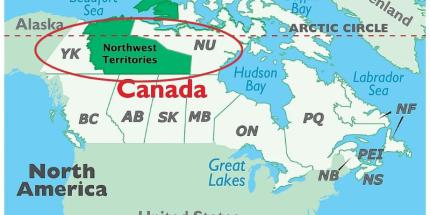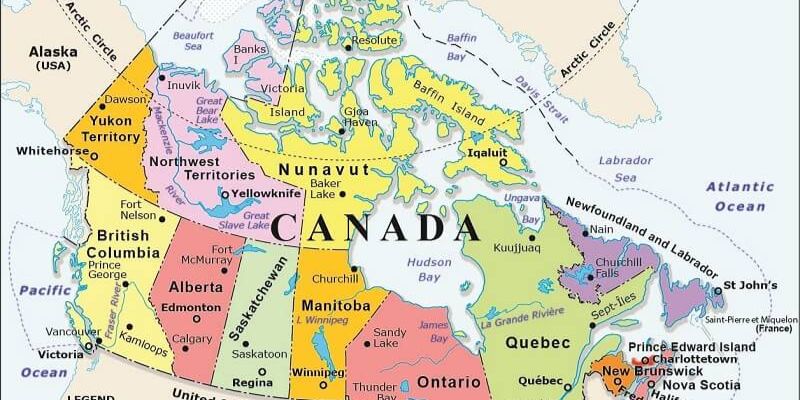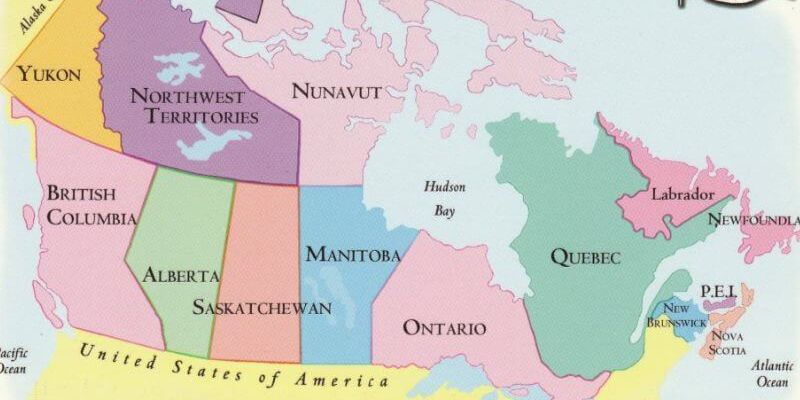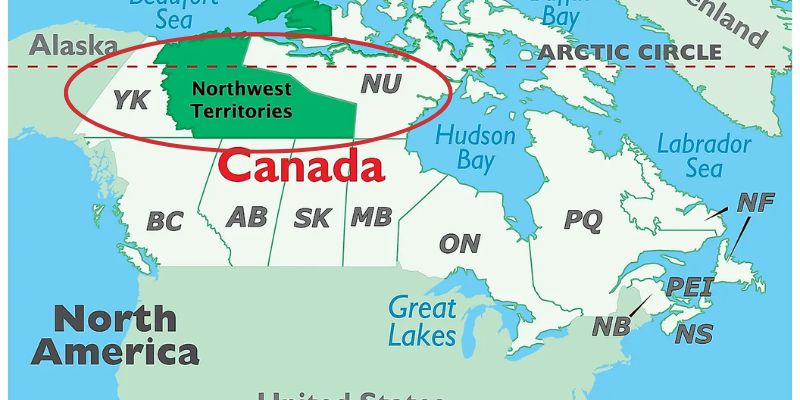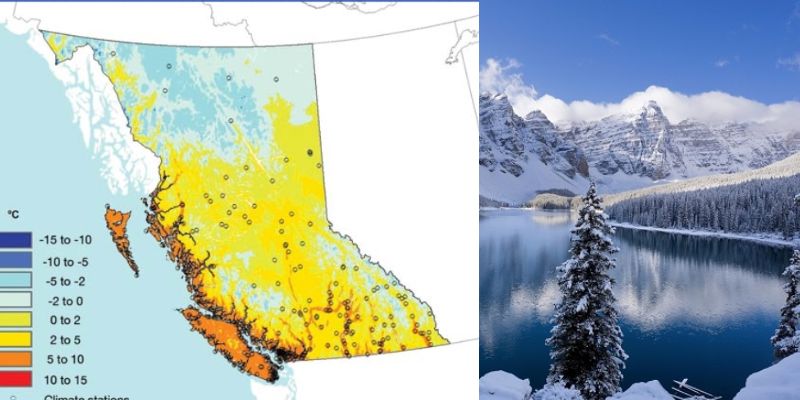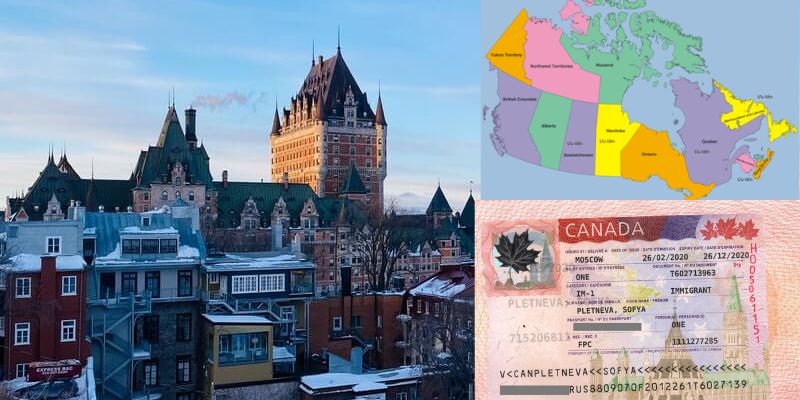Get free consultation
Fill out the form and we will contact you
Canada is the world’s second-largest country, featuring diverse terrain that stretches from the Atlantic Ocean to the Pacific Ocean. If you are planning to immigrate, study, or explore this country, understanding Canada’s map will give you a clearer overview of the provinces, climate, and regional characteristics. Let Quoctichthuhai.com guide you through detailed information in the following article to better understand this beautiful Maple Leaf Nation.
The map of Canada shows that the country is located in North America, bordering the United States to the south and Alaska to the northwest. With an area of nearly 10 million km², Canada is the second-largest country in the world and has the longest land border globally.
Canada’s territory stretches from the Pacific Ocean in the west to the Atlantic Ocean in the east, spanning approximately 41°N to 84°N latitude and 52°W to 141°W longitude. With three oceanfronts, Canada also boasts many of the world’s largest freshwater lakes.
According to the map, Canada is currently the second-largest country in the world.
Its diverse terrain and distinctive climate create a rich ecosystem, ranging from prairies and taiga forests to icy regions. Winters in Canada are very cold with snow cover, while summers are quite pleasant, with temperatures ranging from 25°C to 30°C. If you plan to study, work, or settle here, understanding the maps of Canada and the U.S. will help you adapt more easily to the environment and climate.
Each province and territory in Canada has its own unique characteristics and distinctions. Specifically:
Canada’s map features many provinces, each with distinctive traits, from majestic natural landscapes to rich cultural heritage. Here is detailed information about the most notable provinces in the Maple Leaf Nation:
Each province in Canada has its own unique characteristics
Alberta: Located in western Canada, bordering Montana (U.S.) and Saskatchewan, Alberta is renowned for the Rocky Mountains. It covers an area of about 600,000 km² with a population of around 2 million people.
British Columbia: This Pacific coastal province is famous for its majestic mountains and mild climate. British Columbia attracts many residents, especially to the city of Vancouverncouver.
Ontario: Canada’s second-largest province by area at 1.1 million km², Ontario is known for Niagara Falls and major cities like Toronto, an important economic hub of Canada.
Québec: The largest province in Canada, covering 1.45 million km², Québec has a distinctive French culture, with a majority French-speaking population.
Nova Scotia: Surrounded by the sea on three sides, Nova Scotia has a population of over 390,000 and is known for its rich cultural heritage and stunning natural landscapes..
In addition to its large provinces, Canada also has three territories, each with its own unique characteristics and beauty. Specifically:
The three special territories of Canada
Northwest Territories: Covering a vast area of 3.4 million km² in northern Canada, this region is sparsely populated and largely dependent on mining. It is known for its pristine, untouched landscapes.
Nunavut: With an area of over 2 million km², Nunavut is a self-governing territory in Canada with a population of around 25,000. It features icy landscapes and a rich presence of wildlife.
Yukon: Located in the northwest corner of Canada, Yukon covers approximately 483,450 km² and has a population of about 28,000. Known for its cold climate, Yukon is one of the least populated regions in Canada.
Canada’s map not only highlights prominent provinces but also major cities such as Toronto, the largest city in the country. Toronto offers numerous economic and cultural opportunities. Using a map of Toronto can help you easily locate important sites, from economic centers to popular tourist attractions.
Canada’s climate is characterized by cold winters
Canada’s climate map reflects the country’s vast weather diversity, showing a wide range of climatic zones. From the cool temperate climate of the West Coast to the icy conditions of Northern Canada, the map highlights clear regional differences.
The northern regions, including Yukon, the Northwest Territories, Nunavut, and parts of Manitoba, Ontario, and Quebec, experience long, harsh winters with average temperatures dropping as low as -25°C. In contrast, the western part of the country, particularly British Columbia, enjoys a mild oceanic climate with average temperatures around 15°C, minimal snowfall, and generally pleasant weather year-round.
Central and eastern regions, such as Ontario, Quebec, and the southern provinces, see average annual temperatures around 20°C. Inland areas like Alberta and Saskatchewan have a continental climate, with hot summers and cold winters.
Canada is known for its extreme temperatures, ranging from 45°C in summer to -63°C in winter. This fascinating climate map of Canada shows how each region has distinct characteristics, creating a truly unique environmental diversity.
Fast and reliable international immigration services at quoctichthuhai.com
If you are planning to immigrate to Canada, choosing the services of quoctichthuhai.com is a smart decision. We provide reputable and effective immigration solutions, supporting you from the initial stage through to the completion of your immigration procedures.
We take pride in offering trusted Canadian immigration services with many years of experience in CBI/RBI programs. Our commitment is to deliver efficient solutions that help clients achieve their dreams of obtaining a second citizenship and long-term residency. All services strictly comply with legal regulations, ensuring a smooth and quick immigration process.
To optimize immigration outcomes, we carefully study the specific needs of each client. We provide options based on Canada’s map and living conditions in various provinces, helping you make informed decisions.
Understanding Canada’s map is key to making wise choices—from selecting the right place to live to planning long-term development in the country. If you are considering immigration, contact https://quoctichthuhai.com/ for detailed guidance and professional support throughout the process.
Fill out the form and we will contact you
